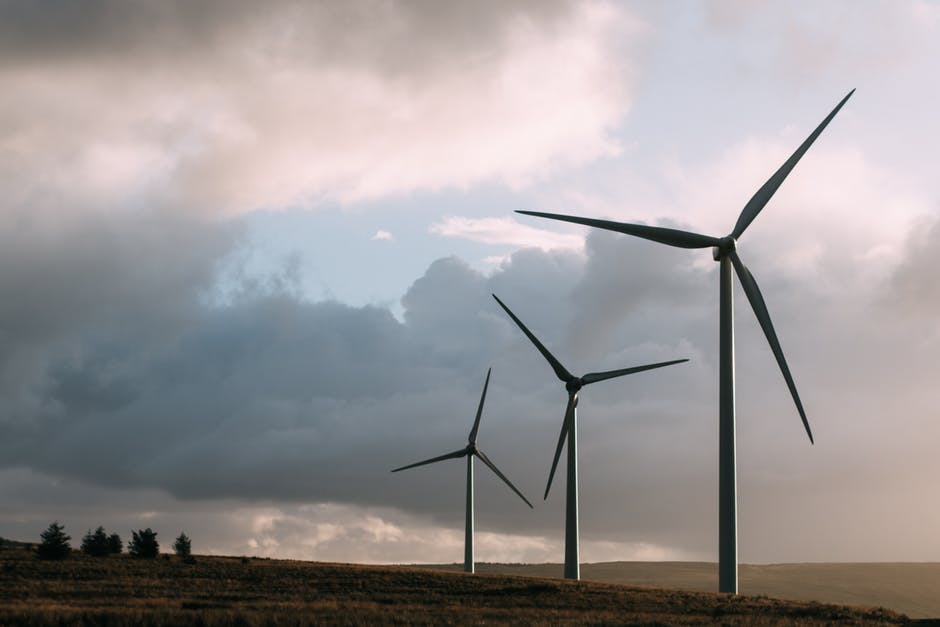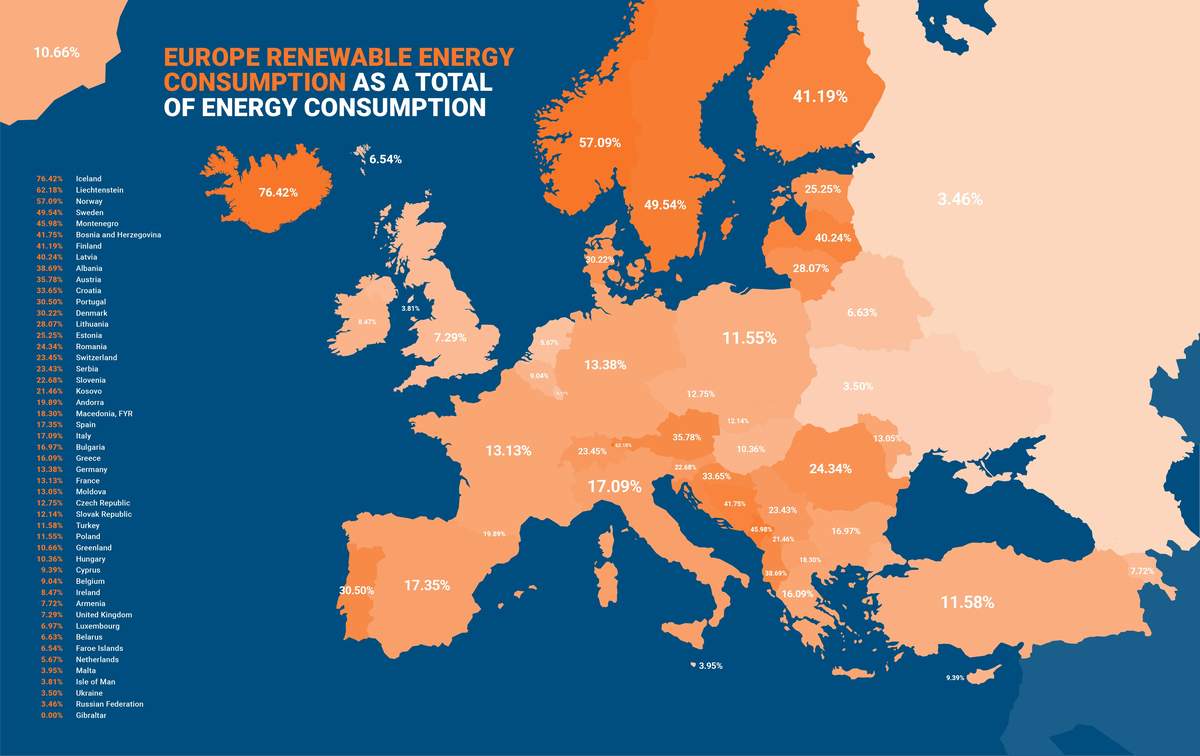The UK consumes a smaller proportion of renewable energy than most of its European neighbours, new data shows.
Government figures recently released show 8.9 percent of total energy consumption came from renewable sources in 2016. The share of renewable energy consumed in the UK has risen sharply since 2010 and, according to the government report, the UK has gone beyond its 7.5 percent provisional target during 2015/2016 by growing its use of renewable sources to 8.5 percent.
But when looking at the data in light of other European countries’ renewable share, a different picture starts to emerge that shows the UK lagging behind.
The latest global data compiled by the World Bank shows that in 2014, the European Union had an average share of renewable energy consumption of 16 percent.
At the time, only 7.29 percent of the UK’s total energy consumption came from renewable sources — less than most of its neighbours, including Ireland which had a share of 8.47 percent, France and Germany with 13 percent, and Italy and Spain with respectively above 17 percent.
Only a handful of countries performed less well than the UK, with Luxembourg, Belarus, the Netherlands, Malta, Ukraine and Russia being under the 10 percent mark.
Leading the way, Iceland, Lichtenstein, Norway and Sweden had at least half of their total energy consumption coming from renewable energy. At the top of the list, Iceland achieved a share of 76.42 percent of renewable energy in its overall consumption.
Soure: 2014 data from the Sustainable Energy for All database led jointly by the World Bank, the International Energy Agency and the Energy Sector Management Assistance Programme. Visualisation: Anchor Pumps.
The data compiled by the World Bank focuses on the final energy use per country, which includes energy used by homes, industry, and transport such as planes, trains, and cars. Meanwhile, energy produced from wind, solar, hydropower, bioenergy, wave and tidal energy as well as energy from landfill and sewage gas are considered renewable.
It should also be noted that the share of renewable energy consumed also depends on how much energy a country uses and does not reflect the amount of power produced by renewable sources.
The data draws a picture in which the UK has a long way to go to move its energy consumption away from fossil fuels in line with its international commitment to tackle climate change. Yet other factors such a population size, natural resources and domestic challenges such as energy imports should also be taken into consideration when comparing countries.
Last year, for instance, Bosnia and Herzegovina had 41 percent of its energy consumption coming from renewables – nearly six times the share of renewable energy consumed in the UK. But while about 40 percent of Bosnia and Herzegovina’s energy comes from hydropower, the remaining 60 percent is derived from coal-fired power plants. And last year, the country’s seven major coal mines increased production by more than 10 percent, which would have significantly increased its greenhouse gas emissions.
On the contrary, during the same period the UK only consumed 6.4 percent of its energy from coal, less than its wind energy consumption. Meanwhile, the World Bank estimated Bosnia and Herzegovina had a population of 3.5 million while the UK had 65.5 million, which reflects a very different energy demand.
Although the data shows the UK needs to take strong action if it wants to transition towards a more sustainable and greener economy and one day achieve a goal of 100 percent of renewable energy, comparing the above data should also be done in light of each country’s complex energy demand and production systems.
UK Renewable Use Over Time
Until 2007, the UK generated less than one percent of renewable energy within its energy mix. Three years later, following the adoption of the Climate Change Act, which sets legally binding targets to cut the country’s emissions, the share of renewable energy consumed started to increase, reaching about four percent in 2013 and nearly nine percent in 2016.
But this steady rise is unlikely to be enough to meet to government’s target of increasing the renewable share to 15 percent by 2020 – which is less than three years away.
MPs from the Energy and Climate Change Select committee warned last year the Government will fail to meet the target if “urgent action” was not taken especially regarding energy production for heating and transport.
In June the Committee renewed its warning. It said the government needed to arm itself with a new strategy to address climate change risks and highlighted the fact progress on reducing emissions and growing the renewable energy share were stalling.
At a time when most countries around the world have renewed their commitment to the Paris Agreement following Donald Trump’s announcement the US will withdraw from the treaty, many have called for the UK Government to send a strong signal it is dedicated to meeting its goals and that should start with boosting the share of renewable energy consumption.
UK region
Across the UK, each region plays a different part when it comes to generating electricity from renewable sources.
Wind remains the greatest source of renewable energy generation. A Carbon Brief analysis found that in 2016, the proportion of renewable electricity produced by wind overtook coal to reach 11.6 percent.
The latest regional figures published by the government, show that in 2015 Scotland produced about a third of the UK’s total wind energy and had about 39 percent of the UK’s wind capacity. But wind energy is not just a Scottish affair and many parts of England and Wales are also producing it.
Yorkshire and the Humber dominate the bioenergy production with 54 percent of the UK’s capacity while the East of England has 17 percent of the country’s landfill gas capacity.
England accounts for about 85 percent of the UK’s total solar capacity but a quarter of the overall capacity is located in the South West.
In 2015, London also had the highest sewage gas capacity in the country.
Photo: Sam Forson via Pexels | CC0
Subscribe to our newsletter
Stay up to date with DeSmog news and alerts







